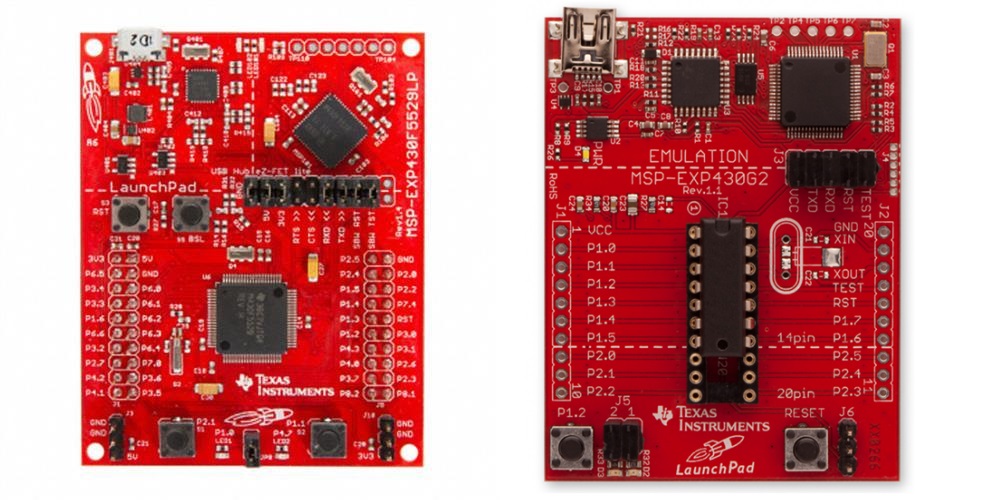SLAA600E June 2013 – January 2024
- 1
- Abstract
- Trademarks
- 1Introduction
- 2Implementation
- 3Customization of MSPBoot
- 4Building MSPBoot
- 5References
- 6Revision History
4.2.1 LaunchPad Development Kit Hardware

A. P2.0 is not connected to LED2 by default in MSP-EXP430G2. An external connection can be added for demo purposes when using I2C communication
B. Jumper J5 that connects P1.6 to LED2 must be removed in MSP-EXP430G2 when using I2C communication.
Figure 4-4 Target Boards: MSP-EXP430F5529 and MSP-EXP430G2The bootloader and demo applications use the same LED (LED1 and LED2) notations across all variants of the LaunchPad development kits. The pin assignments that correspond to these I/O peripherals are different for each board derivative. For each use, the examples have been designed so that the host and target LaunchPad development kits can be the same derivative, although there are examples and this can be modified for different configurations if desired.